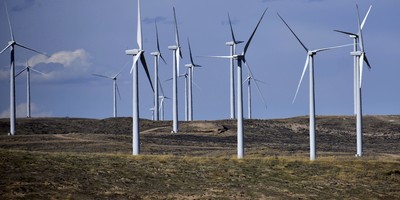President Barack Obama's looming post-election state visit to India is another indication of evolution and maturation -- the incremental but genuine change measured in decades that marks the coalescing of U.S. and Indian global interests.
Media coverage has thus far portrayed the trip as either a presidential escape from an anticipated midterm electoral defeat or a multibillion dollar weapons-peddling expedition with the president as salesman in chief.
These near-term interpretations both contain a grain of truth, but they shouldn't obscure the truly compelling story: the great U.S.-India rapprochement is one of the early 21st century's major historic events. To illustrate, let's go to the 21st century map of India, and view it and President Obama's visit from the perspective of a Chinese admiral sitting in Beijing.
The Indian subcontinent physically dominates the Indian Ocean. China, seeking to assure a steady supply of raw materials and energy for its expanding economy, has invested a lot of time and money in Africa and the Middle East. Tankers carry oil from Sudan and merchant vessels cobalt from the Congo to Chinese ports. These ships pass through waters patrolled by the Indian Navy, which is a rather formidable and increasingly modern force.
Our Chinese admiral knows his history. China's 1950 invasion of Tibet riled India. China's military support of Pakistan and its clandestine encouragement of Pakistan's nuclear weapons program also irritate New Delhi. In 1962, India and China fought the Sino-Indian War along their Himalayan frontier. That war remains something of a "frozen" conflict politically, and given the altitude, literally. Despite negotiations, the border dispute is not quite resolved.
Recommended
Should another conflict erupt, the Indian Navy is positioned to damage if not strangle China's economy. Moreover, India just might have America on its side. For over two decades, American strategists have touted the logic of an Indo-American alliance based on linguistic and cultural connections, accelerating economic cooperation and -- well, here's the gist of it -- an increasing interest in curbing Chinese hegemony in Asia.
Sept. 11 and Islamist terrorist attacks in India forge another common cause. As for mutual economic interests, an Indian technician fixing an American computer from a call center in Bangalore is a telling indicator. The Indian government, unlike China's, does not fear global connectivity.
Chinese admirals aren't the only ones who see the implications of this strategic merger. Diplomats in New Delhi and Washington are quite aware of it.
Mention "alliance" and the U.S. in the same sentence, however, and India's left-wing parties go berserk. Indian ultra-nationalists who still rail about British colonialism remain deeply suspicious of political entanglements with the U.S. -- though there seems to be little objection to cooperating with other former British colonies like Australia and Singapore.
So "alliance" is a word Indian and American diplomats intentionally avoid. Three years ago, I interviewed James Clad -- at the time the Department of Defense's deputy assistant secretary for South and Southeast Asia -- about the prospects for a formal U.S.-India defense alliance. Clad demurred. "We're not looking for an alliance with anyone. ... It (the word "alliance") sends a wrong signal," for alliances "figure a real or potential opponent." It was a deft answer. Why provoke the Chinese admiral?
Clad now teaches at the National Defense University. This past week, he told a Reuters reporter, "The maturation of U.S.-India defense ties is steady ... ." That was another deft answer, and accurate.
The relationship between India, the developing giant, and the U.S., the developed giant, is maturing -- and Obama's presidential visit is part of this long, involved and delicate diplomatic process that began developing as the Cold War ended. It is in both India's and America's long-term interest that this process continue.

























Join the conversation as a VIP Member